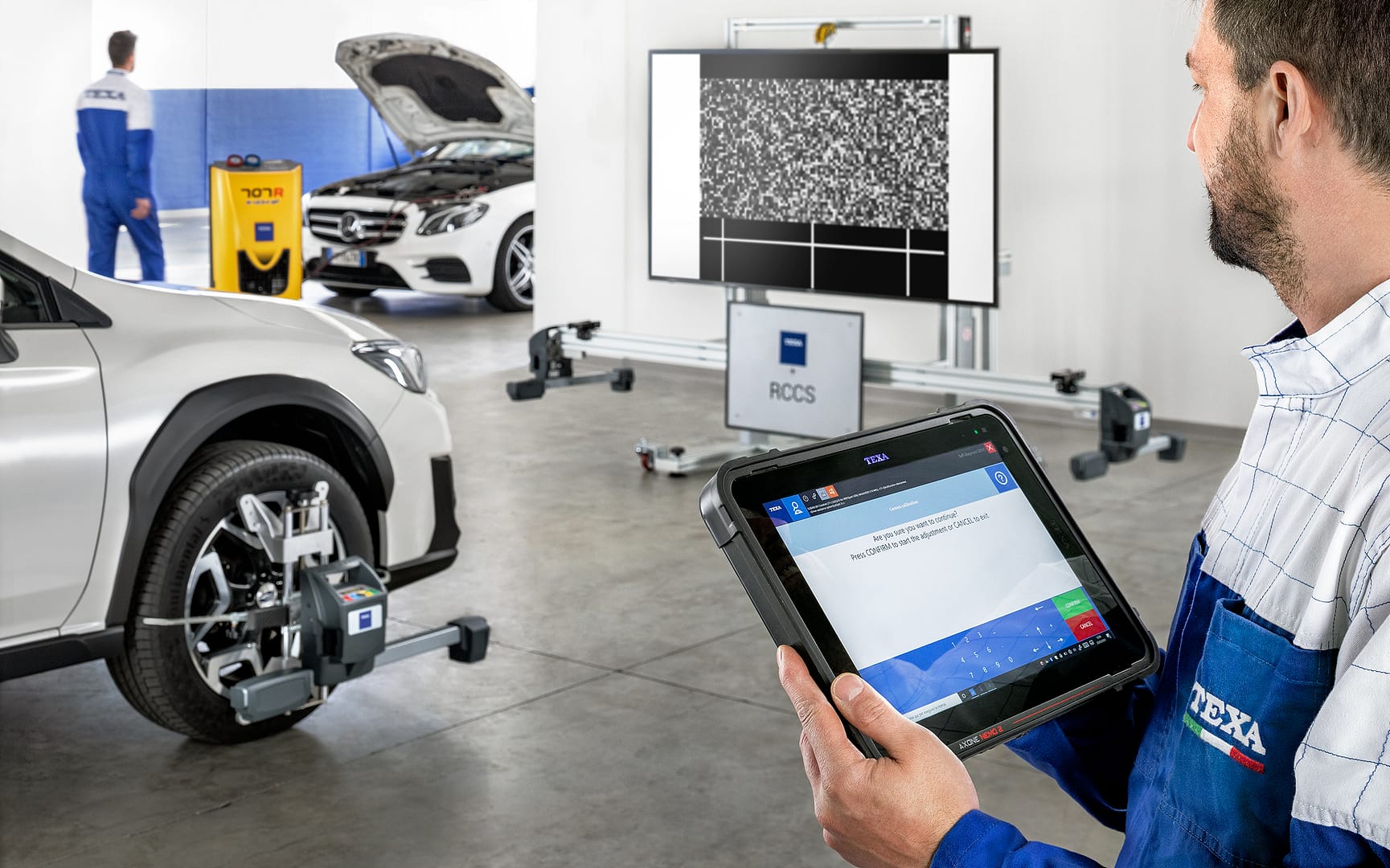ADAS Calibration Facility Requirements
Table of Contents
What is ADAS Calibrations?
ADAS calibration involves the precise adjustment and alignment of a vehicle’s Advanced Driver Assistance Systems (ADAS), which include features such as lane departure warnings, adaptive cruise control, collision avoidance, and blind spot detection. For these safety systems to function properly, their cameras, sensors, and radar units must be correctly calibrated according to the vehicle’s specifications.
Calibration is essential whenever these components might have shifted — whether from a collision, windshield replacement, suspension work, or even normal wear and tear. Even slight misalignment can result in inaccurate data, false alerts, or a dangerous failure to detect real threats on the road.
Is ADAS Calibrations right for your business?
As vehicles become increasingly advanced, it’s important to ask: is ADAS calibration a necessary service for your business? The short answer is yes. Accurate calibration is critical to ensuring systems like automatic emergency braking, forward collision warning, and lane-keeping assistance perform safely and reliably.
Why Precision Matters in ADAS Calibration
If you’re thinking about offering ADAS calibration services, understand this: precision is non-negotiable. These systems rely on finely tuned cameras, radar, and sensors to operate correctly. Even a slight misalignment can lead to inaccurate readings, false alerts—or worse, failure to detect real hazards.
Calibration is often needed after events like:
- Collisions (even minor ones)
- Windshield replacement
- Suspension repairs
- Wheel alignments
- Routine wear and tear
That’s why your calibration facility must allow for easy access and precise adjustment of all ADAS components.
Space Requirements: Do You Have Room for ADAS Calibration?
Before you invest in ADAS equipment, assess your available space. A proper calibration environment isn’t just “nice to have”—it’s essential.
General guidelines:
- Minimum space: 30 x 50 feet
- Larger vehicles may need even more room
- The area must be flat, unobstructed, and free from overhead interference
Most collision repair shops struggle with this—an estimated 80% don’t have enough space for proper calibrations. If space is tight, consider renting or expanding your facility.
Key environmental requirements include:
- Level flooring
- Uniform, adjustable lighting
- Power access and equipment storage
- Minimal reflective surfaces and proper ventilation
Lighting Requirements: Avoid Calibration Errors
Lighting plays a major role in calibration accuracy. Poor lighting can cause system errors, misalignment, and failed recalibrations.
What you need:
- High-quality, flicker-free LED lighting
- Uniform, diffused illumination across the workspace
- Adjustable lighting to adapt to seasonal or time-of-day changes
Tips for optimal lighting:
- Avoid direct lighting over windshields or hoods
- Use shades or curtains to block natural glare
- Deploy a light meter to ensure consistent luminance throughout the shop
Flooring Considerations: Keep It Level and Safe
Your floor must be:
- Flat and level (within +/- 10mm, per OEM specs)
- Non-reflective and low-gloss
- Easy to clean and durable
Recommended materials: concrete, epoxy resin, or vinyl.
Power Supply: Stay Powered, Stay Accurate
Reliable power is crucial for running ADAS calibration equipment.
Must-haves:
- Stable, nearby electrical outlets
- Uninterrupted power supply (UPS) to avoid calibration interruptions
- A backup power source (like a generator) if consistent electricity is an issue
Environmental and Facility Factors
Aside from lighting and space, be mindful of other environmental variables that could compromise accuracy:
- Sunlight & Reflections: Block or diffuse direct sunlight and remove reflective surfaces like mirrors, metal posts, and glass doors.
- Ventilation: Proper airflow is essential, especially when working with chemicals or running vehicles.
- Temperature & Humidity: Keep conditions consistent for both the operator and equipment.
- Wall Coating: Use light-colored, non-glossy paint that matches the floor for a distraction-free calibration area.
Internet Access: Stay Connected
A strong internet connection is non-negotiable. You’ll need it for:
- Downloading software updates
- Accessing calibration protocols and OEM data
- Submitting calibration records or certifications
No internet? A wireless hotspot or dedicated router is a good solution.
Ready to Get Started? Let Defy Diagnostics Help
Launching an ADAS calibration service is a big step—but it’s also a smart one. With proper planning and support, you can tap into a growing market while helping improve road safety.
Not sure where to begin? We’re here to help you every step of the way.
Contact us today to learn how to integrate ADAS calibration into your business with confidence.

